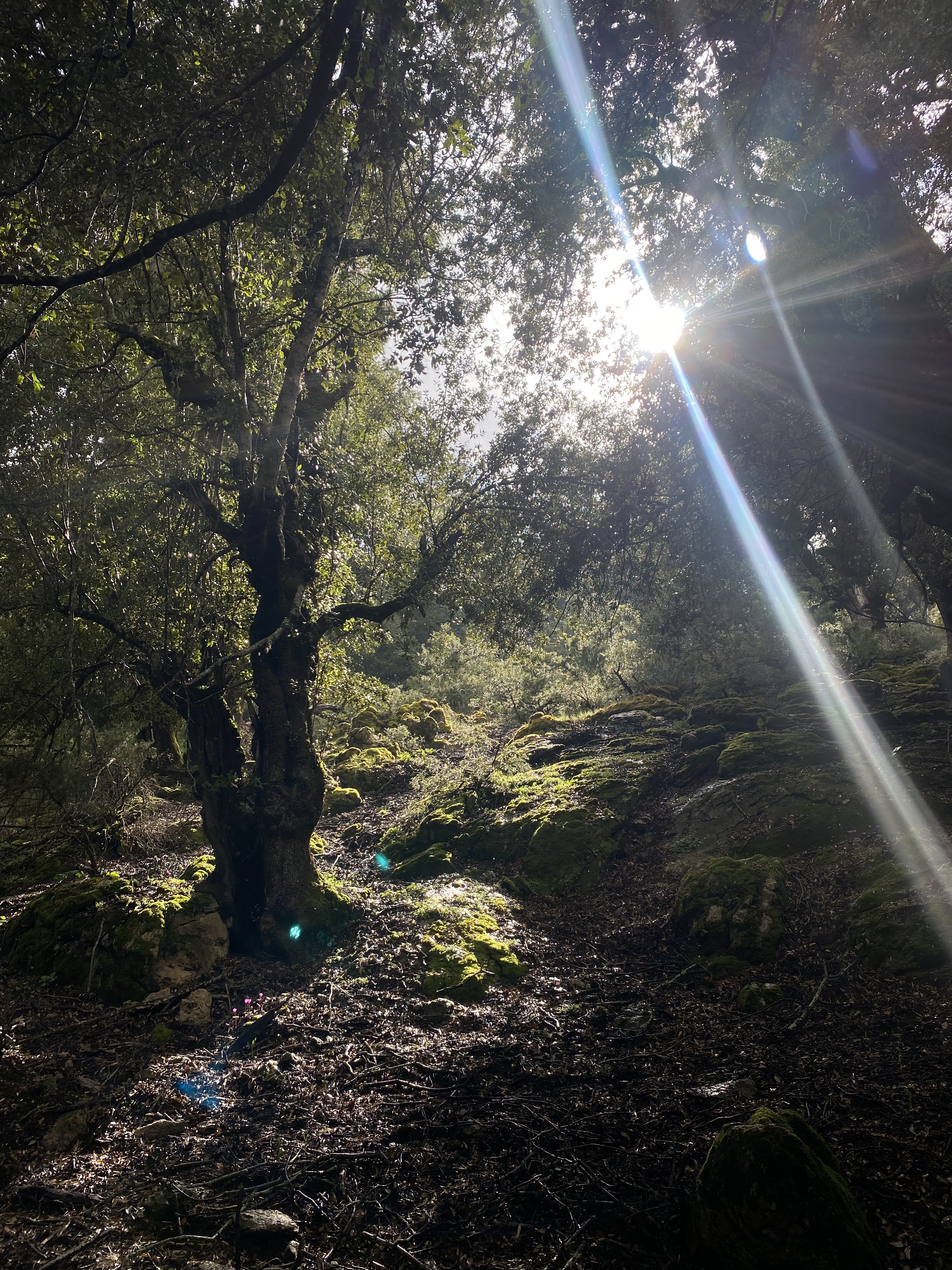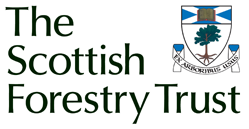Integrating biodiversity and climate change adaptation in Mediterranean forests
Posted on
The Scottish Forestry Trust recently supported Ben Wilson, a PhD researcher at the University of Stirling, in attending the Pro Silva Annual Meeting held in Gavoi, Sardegna from 7-9 May 2025. In this blog post, Ben shares his reflections on the meeting, networking, related field visits, and the valuable insights he gained. This experience has deepened his understanding of Mediterranean forest ecology, silviculture, and management practices, and how these approaches could be valuable to future forestry in the UK.
My field of research at the University of Stirling is exploring the effects of implementing continuous cover forestry (CCF) in Scotland. This work spans a wide range of topics, from assessing biodiversity using moths as bioindicators and soil eDNA metabarcoding for fungi, nematodes, and arthropods, to scenario analysis modelling and considerations of human wellbeing. All of which follow the theme of investigating rotational forest management and continuous cover forest management.
An opportunity arose to attend the Pro Silva Annual Meeting in Sardegna (Sardinia) through my membership of the Continuous Cover Forestry Group in the UK. The theme of the meeting was Integrating biodiversity and climate change adaptation in Mediterranean forests and consisted of a combination of relevant presentations and field trips relating to closer-to-nature forestry (synonymous with CCF) hosted and presented by both academics and practitioners. The knowledge exchange throughout the visit was further enriched by the attendance of 19 Pro Silva member countries from across Europe.
The first day consisted of a range of presentations initially highlighting closer-to-nature forest management and a background on Sardegna’s forested areas. Over 50% of Sardegna is forested, consisting of a mixture of high forest, coppice, forest meadow and wood pasture. Although this is an impressive figure, it was contrasted against the low percentage of primary forest in the Mediterranean at less than 1% of forest area. The forests in Sardegna are largely made up of holm oak (Quercus ilex), cork oak (Quercus suber) and downy oak (Quercus pubescens). Additionally, much of the forest management has previously been rather informal, with a focus on fuel wood production for heating and cooking. Forest management, inventories and record keeping only date back 50 years. Couple this with challenges from climate change, such as fire and extreme weather events contributing to erosion and the management soon becomes complex without historical data.
As already mentioned, fire risk management is one of the primary objectives in Sardinian forest management. This issue was well represented in the presentations from both academics and practitioners, with examples of research into fire risk modelling and implementing pyro-silviculture techniques (e.g. creating large gaps between stands containing edge habitat and fire breaks). Also, showcasing methods of modelling risk at landscape and local levels to inform land managers of areas of high or low risk and which methods they could implement to lower that risk (e.g. prescribed grazing and burning).
Linking to the relatively young age of forest management in Sardegna, and the shift from more cultural uses, there are projects looking into how forests can be managed sustainably for timber, non-wood products and fuel wood production. Additionally, the Life GoProForMed project seeks to integrate biodiversity monitoring, recovery and protection into closer-to-nature forest management in Sardegna, through improving Mediterranean forest habitat biodiversity islands and connectivity.
The first day of field trips was a visit to the Seneghe Forest Commons, around 900 ha of forest largely consisting of cork oak and holm oak. The aim here is to strike a balance between safeguarding endemic species and habitats, enhancing socio-cultural activities, cork production and firewood production. Although the state foresters have implemented the silvicultural systems and management since 2016, currently, there is no community body to take things forward. Further, the site was largely managed as coppice with standards for charcoal production until the 1950s and is therefore only at the beginning of a transformation to a closer-to-nature structure.

On the final day, we visited Montes Regional Forest near Orgosolo. The 4,660 ha forest is managed by the Forestry Agency in Sardegna where they work closely with the Life GoProForMed project. Here we were introduced to the holm oak forests that are being transformed to closer-to-nature forests while allowing the target habitats to colonise new areas and create biodiversity islands. These forests have traditionally been used for fuelwood production, and now the local communities are being persuaded to leave dead and fallen wood on the ground. This change has not been universally adopted; as a result, the project has had to create deadwood more subtly in less recreational areas through ring-barking and girdling.
Another feature of some parts of the forest is low-density grazing to aid in reducing fire risk. From a closer-to-nature perspective, this could be troubling. As the grazing livestock reduces ground vegetation for fire risk reduction, tree seedlings are also browsed. However, in some areas, a natural solution has been emerged. Cade juniper, Juniperus oxycedrus, an unpalatable species, can regenerate to a height which allows sufficient light and protection from grazing, for the holm oak to grow out of the shrub layer and into the sub-canopy.
Ultimately, the Pro Silva Annual Meeting in Sardegna provided a new perspective on woodland management and silviculture with some unique socio-cultural and climate-related pressures. Although the forests have been managed for centuries for fuelwood production, active and detailed forest management has only been present for the past 50 years or so. This results in forests which are at the beginning of their closer-to-nature transformation, and which currently lack the structure or regeneration we are used to seeing in mainland Europe. Although these habitats appear challenging to manage, the experimental approaches with long-term visions are a step in the right direction to making these forests more resilient for the future.
The knowledge I have gained of Mediterranean forest ecology, silviculture and management, coupled with valuable networking has undoubtably benefited my understanding of forestry, and how it can be applied in a range of climatic situations. In particular, exploring how forests can be designed to reduce fire risk while providing products and socio-cultural benefits will become increasingly valuable for the UK in a future of climate uncertainty.
Finally, I would like to express my appreciation to The Scottish Forestry Trust for supporting this visit through the Early Career Researchers Fund and aiding in the further development of my knowledge of forestry management and silvicultural practice.
University of Stirling
